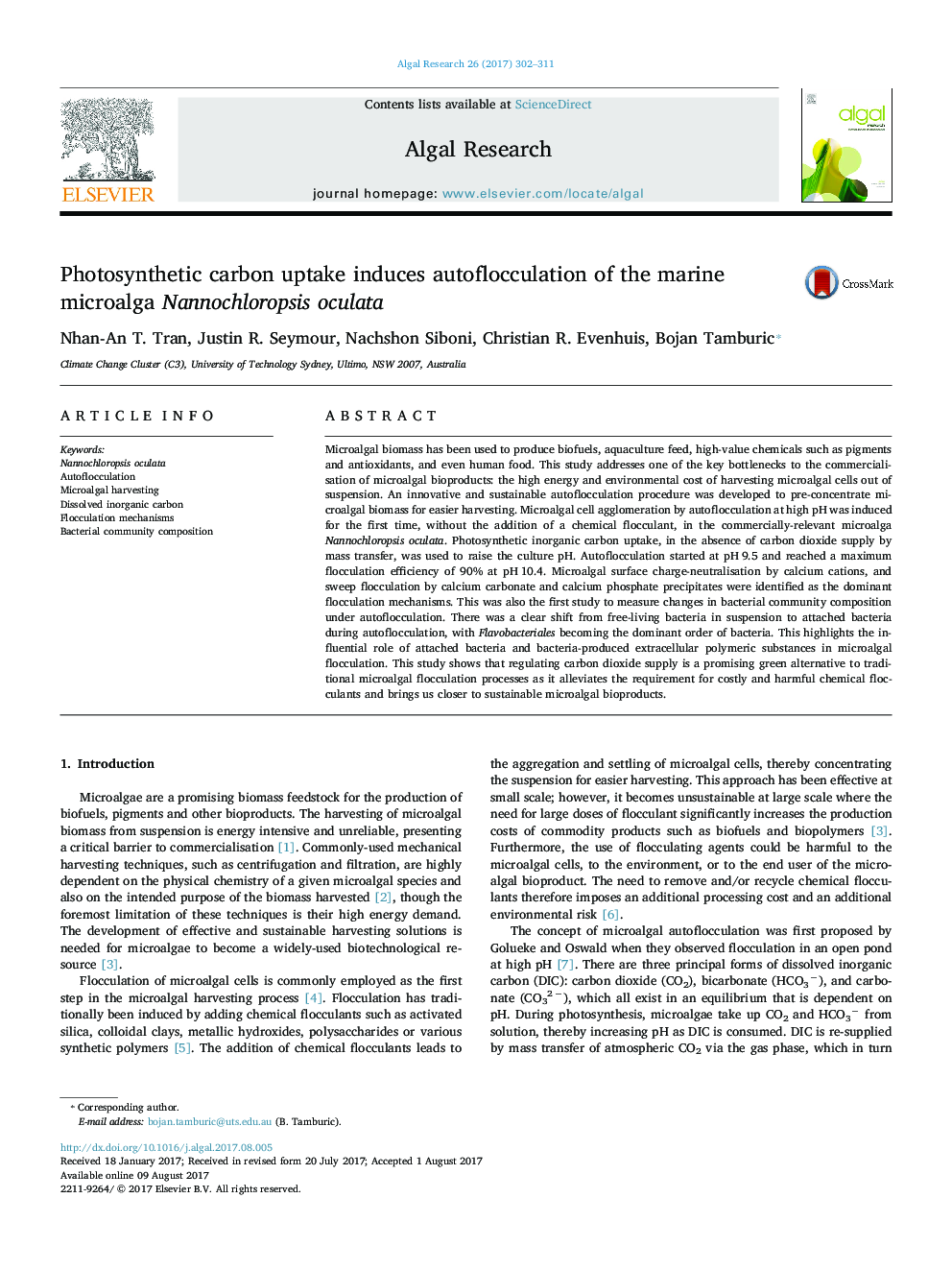| Article ID | Journal | Published Year | Pages | File Type |
|---|---|---|---|---|
| 5478282 | Algal Research | 2017 | 10 Pages |
â¢First report of autoflocculation in the microalga Nannochloropsis oculata without the addition of any chemical flocculantâ¢Photosynthetic inorganic carbon uptake was used to raise culture pH and induce autoflocculationâ¢Maximum flocculation efficiency of 90% was attained at pH 10.4â¢The primary autoflocculation mechanisms involved calcium dependent charge-neutralisation and sweep flocculationâ¢Bacterial community shifted from free-living bacteria to attached bacteria dominated by the order Flavobacteriales
Microalgal biomass has been used to produce biofuels, aquaculture feed, high-value chemicals such as pigments and antioxidants, and even human food. This study addresses one of the key bottlenecks to the commercialisation of microalgal bioproducts: the high energy and environmental cost of harvesting microalgal cells out of suspension. An innovative and sustainable autoflocculation procedure was developed to pre-concentrate microalgal biomass for easier harvesting. Microalgal cell agglomeration by autoflocculation at high pH was induced for the first time, without the addition of a chemical flocculant, in the commercially-relevant microalga Nannochloropsis oculata. Photosynthetic inorganic carbon uptake, in the absence of carbon dioxide supply by mass transfer, was used to raise the culture pH. Autoflocculation started at pHÂ 9.5 and reached a maximum flocculation efficiency of 90% at pHÂ 10.4. Microalgal surface charge-neutralisation by calcium cations, and sweep flocculation by calcium carbonate and calcium phosphate precipitates were identified as the dominant flocculation mechanisms. This was also the first study to measure changes in bacterial community composition under autoflocculation. There was a clear shift from free-living bacteria in suspension to attached bacteria during autoflocculation, with Flavobacteriales becoming the dominant order of bacteria. This highlights the influential role of attached bacteria and bacteria-produced extracellular polymeric substances in microalgal flocculation. This study shows that regulating carbon dioxide supply is a promising green alternative to traditional microalgal flocculation processes as it alleviates the requirement for costly and harmful chemical flocculants and brings us closer to sustainable microalgal bioproducts.
